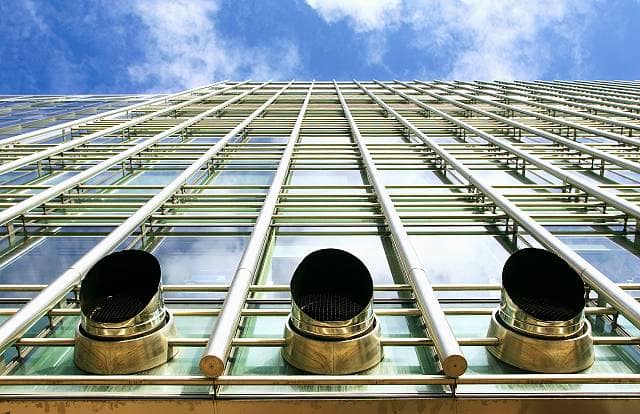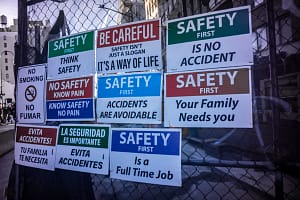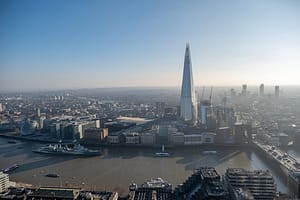External pipework insulation isn’t just good practice—it’s often a legal requirement. In commercial settings, exposed piping can lead to energy waste, safety hazards, and long-term damage if left unprotected. Insulation acts as a barrier against temperature fluctuations, moisture buildup, and mechanical wear, all of which can impact operational efficiency and compliance status.
Regulatory bodies continue to tighten standards around energy performance and workplace safety, making insulation more than a preventive measure—it’s now part of baseline business responsibility. Whether you’re maintaining an existing system or upgrading infrastructure, understanding the implications of external pipe insulation is essential for avoiding fines, meeting sustainability goals, and protecting your investment.
Read on to learn how external pipework insulation supports business compliance and what steps to take to get it right.
Why external pipework insulation matters for compliance
Insulating external pipes is a practical step for businesses that need to meet legal, safety, and operational requirements.
The following are reasons it supports compliance in meaningful ways:
- Energy efficiency: Reducing heat loss from exposed piping directly supports mandated energy saving targets. Effective pipe insulation maintains system temperatures more reliably, lowering demand on heating equipment and cutting energy costs over time.
- Damage prevention: Quality insulation helps avoid water ingress and corrosion, extending the life of water pipes and infrastructure. Durable materials like Mineral Wool or Fiberglass Pipe Insulation resist weather exposure while protecting pipes from impact or vibration in busy industrial settings.
- Safety and reliability: Well-installed insulation reduces surface temperature extremes, making systems safer for staff who work nearby. Many businesses choose to work with companies specializing in mechanical pipework insulation solutions for industrial, commercial, and HVAC systems. Investing in expert external pipework insulation ensures proper coverage, consistent insulation thickness, and protection that stands up to the demands of daily use.
A careful approach to insulation keeps operations safe, reduces costly repairs, and supports compliance with legal requirements.
Key regulations and standards to know
Regulations shape how businesses approach insulation choices and installation methods.
Below are the most important areas to understand:
- Building codes: Local building codes often dictate approved pipe insulation materials and methods to meet efficiency goals. Requirements can address exterior water pipes in unheated zones, specifying protective layers to reduce damage risk and lower heat loss during cold seasons.
- Energy efficiency standards: National or regional rules may define minimum thermal performance values for insulation used outdoors. This can include clear guidelines on insulation thickness, specifying materials such as mineral wool or rigid foam, and setting installation quality requirements to deliver consistent energy savings.
- Health and safety legislation: Regulations often focus on preventing injuries from contact with hot water pipes or chilled lines. These rules can affect surface treatments, labeling, and even the use of protective coverings such as fiberglass pipe insulation or pipe sleeve systems that keep surfaces safe to touch.
Following the right standards supports safety, reduces energy costs, and keeps your business within legal requirements.
Choosing the right insulation materials
Selecting quality materials is critical for ensuring effective protection and meeting compliance requirements.
Below are the most important factors to guide your choice:
- Thermal performance: Insulation should deliver reliable thermal performance to minimize heat loss and support efficiency targets. High-quality pipe insulation made from materials such as mineral wool or rigid foam offers stable thermal resistance even in extreme conditions. This focus helps maintain consistent temperatures in water pipes and reduces energy demand.
- Weather resistance: For outdoor pipe insulation, durability against rain, wind, and UV rays is essential to prevent premature failure. Protective jackets and coatings designed for external use help maintain insulation integrity over time. Investing in resistant materials lowers maintenance costs while supporting compliance with long-term performance standards.
- Fire safety: Materials should meet local fire code requirements to reduce risks in the event of a fire. Choosing options with low flame spread ratings and tested fire resistance improves safety for both property and people. This consideration is particularly important for facilities with high occupancy or strict regulatory oversight.
Selecting the right insulation materials reduces risk, improves reliability, and supports compliance with legal and safety obligations.
Installation best practices for compliance
Careful planning is the first step to a successful installation. Before any work begins, project teams should measure each section of pipe, check the pipe diameter, and confirm the appropriate insulation thickness needed for the conditions. These details help ensure that every section of pipe insulation fits accurately without gaps or areas of compression that can weaken performance.
Once the measurements are confirmed, the installation team should pre-cut materials to match each dimension precisely. This approach reduces handling errors and supports a clean fit, which is essential for maintaining thermal performance and limiting heat loss. Furthermore, installers should use mechanical fasteners or secure adhesives to keep insulation firmly in place, avoiding shifting over time.
Finally, attention to finishing touches is critical for compliance. All seams should be properly sealed with vapor barriers or weatherproof coatings to prevent water ingress, which can damage the insulation and surrounding surfaces. As a next step, labeling the insulated water pipes and documenting every phase of installation strengthens record-keeping and shows clear evidence of meeting regulations.
Inspection, maintenance, and documentation
Effective installation begins with careful planning and preparation. Installers should assess the site, confirm accurate measurements, and address any surface issues that could interfere with insulation integrity. This groundwork sets the stage for a secure, long-lasting application.
Moreover, adapting methods to suit specific environmental conditions is essential. Installers need to account for exposure to weather, varying temperatures, and structural features that can affect insulation performance. Addressing these details during installation helps ensure consistent protection and durability.
In addition, clear coordination and thorough documentation reinforce best practices. Teams should maintain precise records of materials, methods, and inspections to verify quality and support compliance reviews. This commitment to detail helps reduce errors and maintains high standards over time.
Final thoughts
External pipework insulation is more than an operational detail—it’s a critical element of regulatory compliance for businesses. By understanding the importance of insulation, knowing the regulations, selecting the right materials, ensuring proper installation, and maintaining it over time, you can protect your business from penalties, reduce costs, and support environmental goals. Investing in high-quality insulation practices today sets your business up for safe, efficient, and compliant operations for years to come.






Leave a Comment